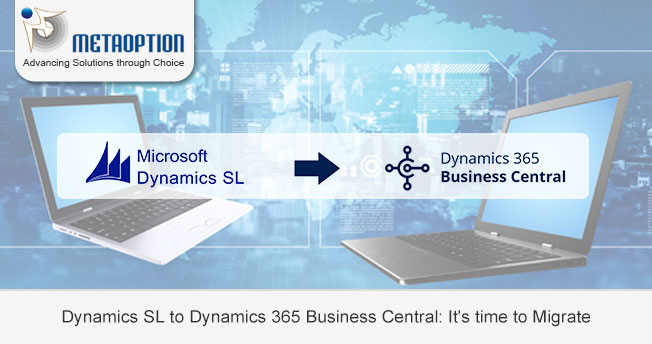There is no doubt that Dynamics SL users are dedicated to their software. Some organizations have been using it for over a decade and have invested in customizations, upgrades, maintenance, servers, and ongoing end-user training and support. The level of devotion to Dynamics SL is simply astonishing. Whereas, you can get more by migrating to a modern cloud-based business management system, such as Microsoft Dynamics 365 Business Central. This cloud-based business management solution is the next generation of Microsoft ERP for small and medium-sized businesses, and it incorporates the benefits of the entire Microsoft platform, including connectivity, mobility, scalability, and flexibility. The good news for the Dynamics SL community is that there are now tools and solutions available.

The benefits of Migrating from Dynamics SL to Dynamics 365 Business Central?
Moving away from Dynamics SL and into the cloud provides organizations with complete visibility into everything that happens within the business and allows them to use real-time insights to drive positive outcomes.
Here are some of the benefits:
· A unified tech stack can manage all project management, time tracking, and accounting features. Also, users can access and share information from any location, track profitability, manage resources, and update timelines.
· Dynamics 365 Business Central offers interactive visual reporting dashboards that make it easy to understand your business at a glance-then drill down into specific areas for more information.
· Dynamics SL users must use Remote Desktop Services to access the system remotely, as well as additional hardware and software investments.
Consider your Dynamics SL to Business Central Migration Alternatives
From Dynamics SL to Dynamics 365 Business Central, there are two main routes. You have the option of performing a direct upgrade or a full implementation.
Here’s a brief overview of each of these options:
Upgrade
If you choose to upgrade from Dynamics SL, all existing data, reports, and customizations will be transferred to Business Central. Also, this process can become complicated, as it may require converting existing code, reconfiguring accounts, or using extensions and overlays to make old processes work with the new system. We should also point out that you will need to upgrade to Dynamics SL 2018 before proceeding with the migration.
Full implementation
In this case, you’re basically starting from scratch. You’ll extract data from the on-premise system, choose which data, reports, and customizations to bring, and then enter it into the new system.
For more information and a tailored demonstration contact us today at MetaOption.


